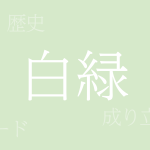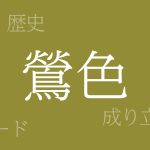Colors are a mirror reflecting culture. Among them, the Japanese traditional color ‘Aoni (青丹(あおに))’ is enriched by the nation’s lush nature and history. In this article, we delve into the world of Aoni, exploring its origins and contemporary uses, embarking on a journey to deepen our understanding of its significance within Japanese culture.
About Aoni (青丹(あおに))
Aoni (青丹(あおに)) belongs to a category of subdued blue with a hint of red. This color, derived from natural dyes, especially from plant sources, has been widely used in traditional art forms such as kimonos and Japanese paintings. Aoni, with its warm hues, imparts a tranquil impression, deeply rooted in the Japanese psyche and local environment.
History of Aoni
The history of Aoni dates back to the Heian period, where records exist of its use. Originally favored by the nobility in their garments, it flourished within aristocratic culture. Over time, Aoni became popular among the masses and started appearing in various Japanese crafts, accessible to all levels of society.
Color Code of Aoni
In the digital age, accurate reproduction of Aoni is crucial. Below are the color codes for Aoni:
- HEX: #99AB4E
- RGB: R:153 G:171 B:78
- CMYK: C:48 M:26 Y:82 K:0
Western Name for Aoni
The Western names for Aoni are ‘Japan Blue’ or ‘Japanese Indigo.’ These names were given when Japanese indigo dyeing techniques and their unique hues were introduced to the West. Aoni is recognized internationally as a fusion of Japanese tradition and craftsmanship.
Summary on Aoni
With its rich history and beauty, Aoni stands as a symbol of Japanese culture, cherished across generations. Today, its value is rediscovered in the realms of fashion, design, and art, where it brings a fresh breath of life. The depth and tranquility of Aoni continue to captivate many, promising to enchant future generations as well.

























